How Are Desert Animals Adapted To Their Environment
Animals have adjusted their ecosystems and environments since the kickoff of fourth dimension, but recently species have been forced to arrange at an increasingly alarming rate. So, how do animals adapt to their environment? We'll cover everything you demand to know, including a few case studies.
Animal adaptations tin be observed at whatsoever time on every continent, in every ocean, and affect every species on the planet. As the Greek philosopher, Heraclitus one time stated, "Change is the only abiding." But precisely how practise animals adapt to their irresolute environments, and in what ways have humans impacted animals' abilities to adapt?
An adaptation is an evolutionary response that a species of plant or animal collectively makes over time to address a challenge to its survival.
Challenges to an creature's survival affect 1 or more of an animal's four basic needs: access to clean drinking water, nutrient, protective shelter, and procreation.
These challenges are born from a change or threat to the beast's ecosystem.

There are two types of adaptations: structural or physical adaptations and behavioral adaptations.
Structural or Concrete Adaptations
Structural or physical adaptations are changes to any part of an animal's physical body. An case of a structural adaptation can exist found by observing moose. Moose — the largest animals in my native Minnesota — have adult long, powerful legs to escape danger and for amend admission to obtain food.
A moose can stitch to 35mph, matching or even exceeding the speed of its principal predator, the gray wolf. Its long legs too requite the moose a summit that aids in detecting predators from afar and allows it to accomplish into trees for vegetation during snowy winters.
Fun fact: the moose's long legs also give it a reputation as one of the fastest swimming country mammals in N America, matching the beaver'southward swimming speed of 6mph!
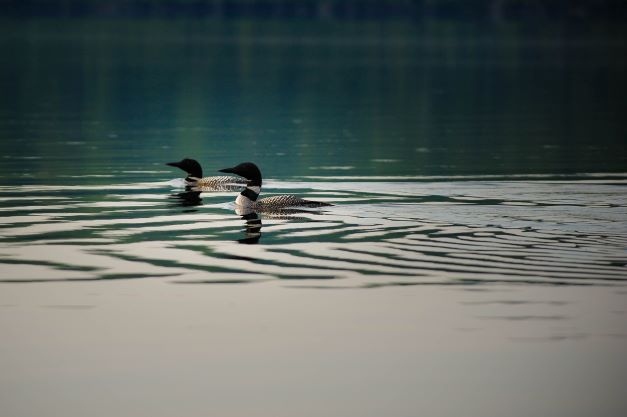
Behavioral Adaptations
Behavioral adaptations are changes made to the way an creature reacts and responds to its surroundings. The best natural example of a behavioral adaptation can be constitute by observing the migrations of Minnesota's state bird, the loon.
A migration is an beast'due south temporary relocation to different habitats. For loons, this occurs seasonally. The unabridged species travels south to regions along the Pacific and Atlantic coasts (sometimes over 1,000 miles) betwixt September and Nov. In late leap, they return to the northern parts of the U.S. and Canada.
While it's easy to understand why loons leave their northern territories during winter for the warmer, more plentiful waters of the southern coasts, the question is, why practice they return northward instead of simply staying where it's warm? There is a straightforward answer: to concenter mates and brood.
Loons take fabricated the behavioral adaptation of migrating north during the spring for the survival of their species.
Loons demand calm, articulate shorelines and large lakes to build their nests on, which practise not be forth bounding main coasts.
While a loon can enjoy line-fishing in the crashing, turbulent ocean during the winter, information technology is a very dangerous place to heighten young in the summer.
The clear, less-polluted waters in the Land of x,000 Lakes brand for an ideal surroundings for loon chicks.
Therefore, equally loons have non found any physical adaptations to breeding along the oceanic coasts, they have adapted their behavior to accommodate the survival of their species.
Animal Adaptations Over Time
The changes that have place during animal adaptations, similar the moose and its long legs, often occur over tens or even hundreds of thousands of years through the process of natural selection. Over time, individual animals in a species that have developed an adaptation that is advantageous in their environment volition survive at a greater rate than those who practise not take the adaptation.
This ways that other animals who accept developed an accommodation that ensures survival volition exist more probable to mate. As they mate, they will pass the adaptation onto their offspring through their genes.
This creature adaptation will then spread through a species as more individuals are born with it, ensuring that these adjusted individuals continue to survive and thrive over others in their species.
Creature Adaptation: The Moose
In the case of the moose, ane of its afar ancestors was most likely born with longer legs than the rest. This ancestor found an advantage considering its summit immune information technology to notice predators sooner and achieve more foliage during the brutal wintertime months.
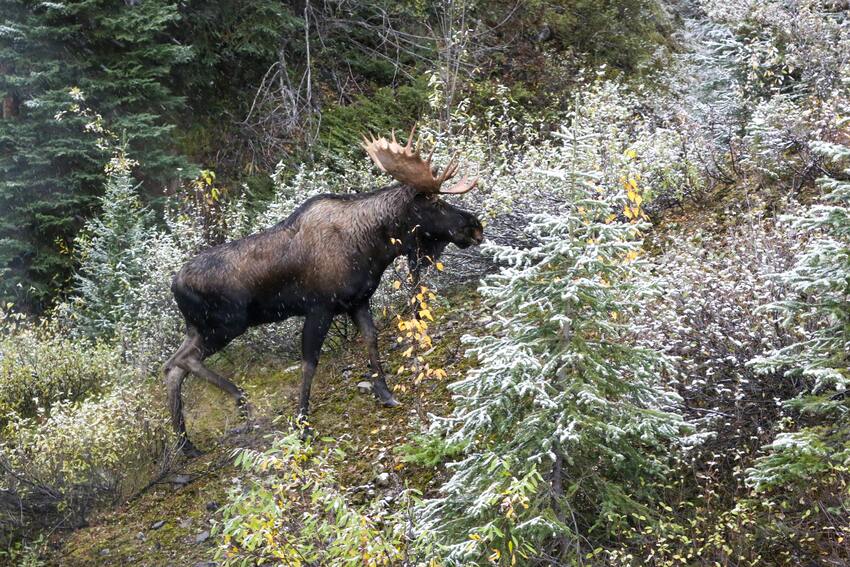
The quicker escape and balls of nutrient made it easier for the moose with long legs to survive.
The moose then passed these genes on to its calves, who too possessed longer legs and, in turn, experienced a greater rate of survival. Eventually, the entire moose species developed long legs to run across the predatorial and scarcity challenges of their surroundings.
Unfortunately, every bit concrete adaptations rely on the procedure of natural pick, which tin accept hundreds if not thousands of years, this is becoming less of an pick for animals to run into new challenges brought on past humans.
Instead, we're seeing many animals resorting to extreme and sudden behavioral adaptations due to human impact on their environments because they don't accept the fourth dimension to enact structural changes.
Run across Related: 12 Reasons Why Animals Should Not Exist Kept in Zoos
Man-Influenced Adaptations
As humans continue to increase their influence over the planet, animals are forced to adapt to the weather condition and challenges nosotros give them.
While dissimilar animals conform well or accept learned how to simply get by in human-influenced environments, others are suffering, and the extinction list is growing every year.
The City Raccoon
In major cities across N America, the common raccoon is currently thriving in highly populated areas. A squad of researchers from York University in Toronto, Canada, found that raccoons take fabricated many behavioral adaptations to their new urban environments.
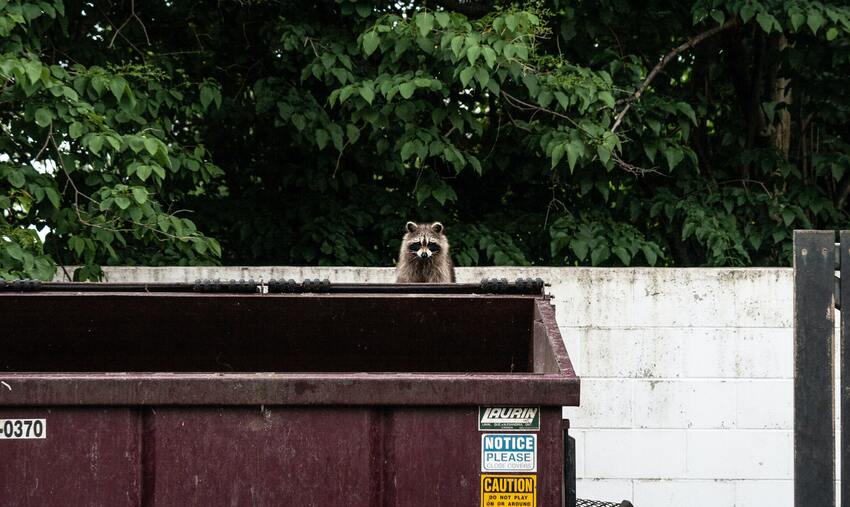
Raccoons are not only experts at understanding where nutrient is to be constitute and utilise critical thinking skills to get at it, but have likewise fabricated their territories smaller to avoid crossing traffic.
On top of that, another team of researchers found that city raccoons take had a Jimmy Neutron "Brain Blast!" moment and now show an expanded encephalon size and more brain activity than raccoons in rural areas.
The Meandering Manatee
Further s, while not thriving, American manatees accept establish a more worrisome mode to get past. Manatees do not have much insulating body fat, and therefore, if hit with a prolonged menses of cold weather, they tin can develop hypothermia quickly and die.
With the explosion of climate change, weather condition extremes are becoming more than frequent and intense. Though manatees typically stay warm during the wintertime by residing nigh natural underwater hot springs, one solid winter storm and a prolonged period of cold waters would be enough to kill an entire herd.
Manatees on the coast of Florida accept found something warmer than hot springs to adapt to their surround: power establish discharge pipes.
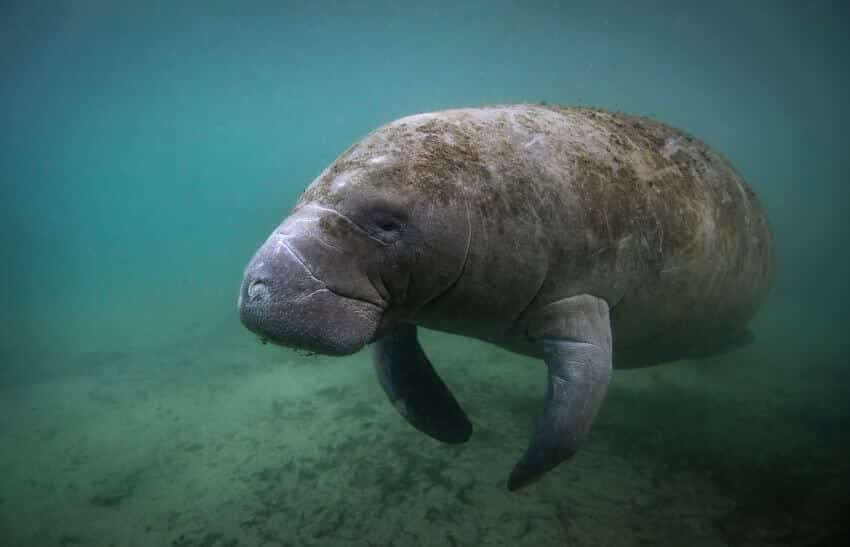
Power plants forth the coasts draw water in to absurd off their systems, and when its expelled back out into rivers and oceans, the water retains its warmth. It is the perfect temperature for manatees.
The main worry hither is not that the manatees are ingesting polluted waters (though they definitely could be) simply that they are condign reliant on human resources.
If a institute suddenly shuts downwardly and at that place are no hot springs nearby, unabridged populations of manatees could freeze and suffer the consequences of their human dependence.
But while some animal adaptations are successful and develop at a rate that matches the speed of alter in their surround, more species struggle to arrange fast enough.
These animals are losing their habitats, sources of nutrient and make clean water. Their breeding and hunting grounds become smaller every twelvemonth.
Pikas on the Precipice
Like the American Pika, some species adapt equally much as possible by moving to the very edge of their habitat range, but information technology'southward non enough. As human encroachment and climate change continue to push pika into ever smaller areas, they're running out of livable infinite.
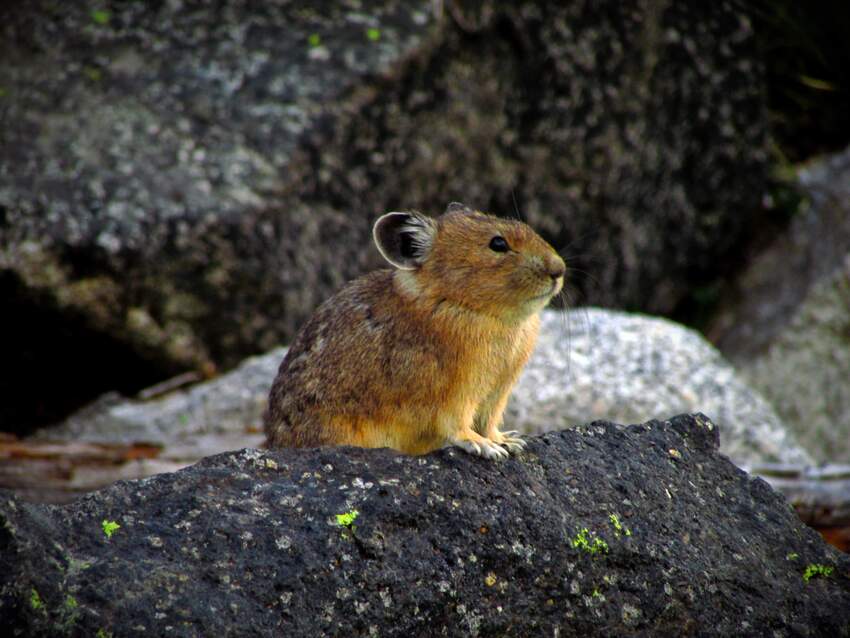
What Happens When An Animal Tin can't Conform?
Today, environmental crises caused by humans are erupting across the globe. It is currently estimated that "Nigh 75% of land and 66% of ocean areas take been 'significantly contradistinct' by people," according to a written report from the Intergovernmental Science-Policy Platform on Biodiversity and Ecosystem Services (IPBES).
We are directly influencing creature adaptations from their natural habitat both from a physical adaptation perspective likewise equally a behavioral perspective.
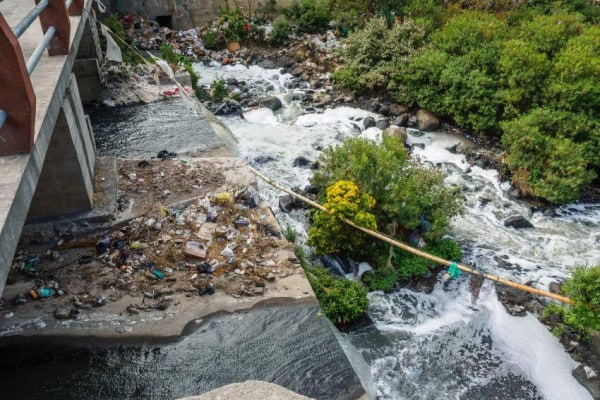
Humans are harming the earth that we alive in. From planet-wide crises such as global climate modify to more than local concerns such equally the Midwest'south declining pollination of native and food ingather plants stemming from the loss of Rusty Patched Bumble Bees which are currently on the endangered species list.
When a challenge to an individual animal's bones needs is besides swell, and the animal cannot observe a way to adapt, it dies. When every private animal that makes up a species cannot find a way to conform, the entire species is lost forever.
According to a recent study, over 8.7 1000000 unlike plant and animal species exist hither on World.
We lose at least x,000 species every year due to the inability of plants and animals to adapt to what we've thrown at them.

The Terrible Impact of Ignoring Animals' Disability to Adapt
A new term has emerged aslope climate modify: extinction deprival. Information technology ways exactly what it sounds like, that a significant amount of people have started to believe that the scientific alarm bells streaming out from extinction lists are faux because they haven't seen extinction events for themselves.
However, extinction events ordinarily have fourth dimension, and in today's fast-paced earth, they tin easily be overlooked.
In the Netflix documentary Chasing Coral, a recreational diver named Richard Vevers notices that his favorite corals are starting to turn white and die in his favorite diving locations. He teams upwardly with an underwater film crew and a team of researchers to document coral reef bleaching events worldwide.
Coral reef bleaching is when the symbiotic human relationship between the coral and its algae (the chief source of the coral's nutrient production) becomes stressed due to extremely warm or cold waters. The stressed and overheated (or frozen) coral volition completely expel all of its algae.
The coral turns white in the absence of color brought past the algae and, without its main source of food, can starve to death.
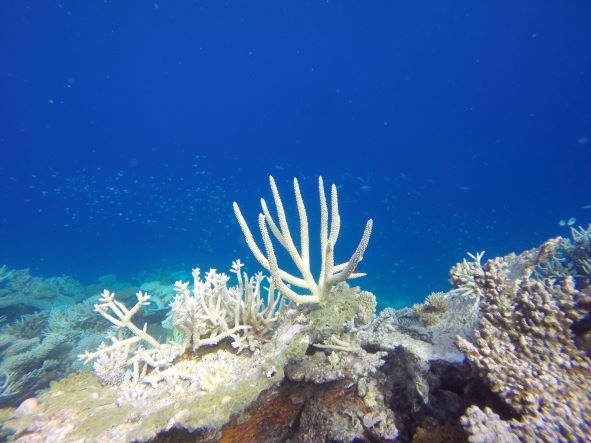
The extremes in water temperature are a symptom of climate change and will but continue to go more frequent and intense. Corals are unable to structurally adapt fast enough to the extremes in water temperature and have non shown any successful behavioral adaptations to these events.
In Chasing Coral, the team documented 1 of the most significant and largest bleaching events in known history during 2016 with fourth dimension-lapse photos taken underwater every mean solar day at the aforementioned location for over a month. This upshot killed 67% of a 400-mile stretch of the Not bad Bulwark Reef in Australia.
The massive corporeality of death during this bleaching event didn't but impact the corals. Coral reefs are the perfect illustration of biodiversity, holding 25% of the globe'due south marine species.
We're even so learning the extent of the affect that bleaching events have on marine life around the globe.

An fauna or institute's inability to adapt to challenges in its environment, particularly the apace-paced difficulties brought on by humans, can not simply affect that ane species but a plethora of species that rely upon each other or interact together. Fifty-fifty humans can be afflicted by this.
Over half a billion people rely on coral reefs equally a source of food or income, and populated coastlines depend on the reefs for protection from subversive waves.
A growing number of people deny the ongoing extinction of species because they don't physically meet them happening. But even if you tin can't see it, you can nonetheless feel the effects of information technology.
Extinction denial is non only existent, it is dangerous for our planet and ecosystems everywhere.
See Related: x Ways to Save Animals Facing Extinction
What Can I Do To Help Animals Arrange?
While terms like "extinction denial" go more common and the growing numbers of endangered and extinct species worsen every twenty-four hours, there are many things that you can practice as an individual to help your local area.
There are a ton of local organizations all over the globe that are helping in any mode they tin can, and a quick google search can help y'all find one to participate in.
Personally, I'm obsessed with Minnesota'due south Lawns to Legumes program.

The program works to create new habitats for the Rusty Patched Bumble Bee, mentioned earlier, and other endangered pollinators in Minnesota and even provides funding for you to do so.
These new habitats, containing native wildflowers and prairie grasses, can be part of your backyard, the median between street lanes or other neighborhood areas. Anything helps!
You lot can also encourage the continued protection of larger habitat areas. I ofttimes support my local Nature Center and its Reserve surface area. There'southward a pair of mated sand cranes that return to the Reserve every twelvemonth to breed. This has been occurring for the last seven years!
The sand cranes' seasonal return is also a perfect example of one of the animal adaptions that is behavioral and that I have personally witnessed.
With such a protected and plentiful area to raise their young, these sand cranes will proceed to render to this ecosystem nosotros take set aside for them.
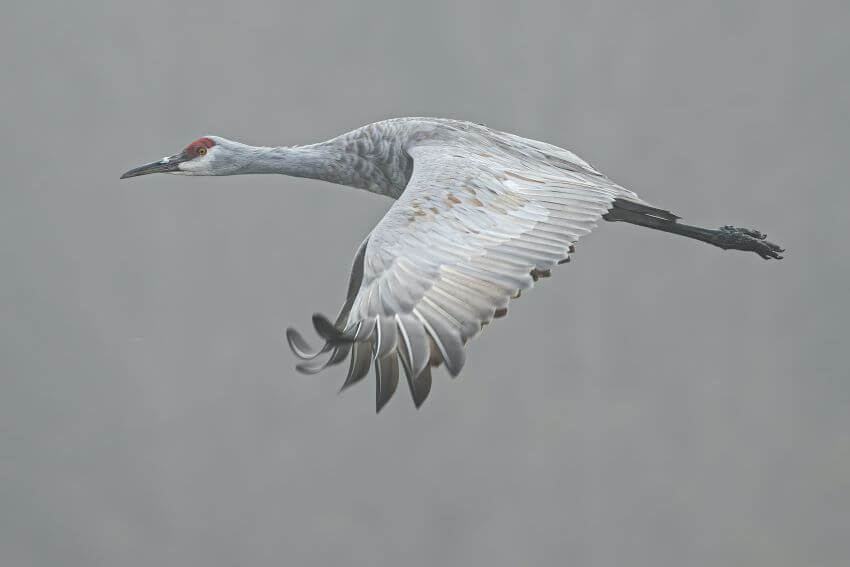
Join our newsletter below for more information on how you can assist!
Related Resources
- Endangered Species in California
- Why Were Animals So Large in the Past?
- 12 Animals That Take Get Extinct
Source: https://www.ourendangeredworld.com/species/how-do-animals-adapt-to-their-environment/
Posted by: seasedeaders50.blogspot.com

0 Response to "How Are Desert Animals Adapted To Their Environment"
Post a Comment